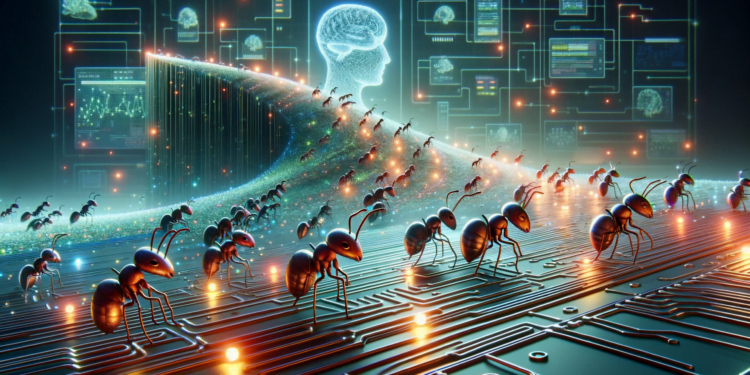At the forefront of heuristic optimization and multi-agent systems, Ant Colony Optimization (ACO) stands as one of the most prominent bioinspired approaches applied to solving complex computational problems. Derived from the observation of emergent behavior and the foraging dynamics of real ants, ACO has been established as a robust paradigm for tackling combinatorial optimization issues such as the renowned Traveling Salesman Problem (TSP).
Theoretical Foundations of ACO
ACO incorporates the concept of pheromones as a probabilistic mechanism of indirect communication, a phenomenon known as stigmergy. As ants search for food, they deposit pheromones along their path, influencing the likelihood that the trail will be followed by others. At the algorithmic level, this idea translates into the iterative updating of a set of candidate solutions, with a preference for those that have performed better (lower cost in TSP, for example).
Recent Advances in ACO
Recent iterations of ACO have incorporated significant improvements in the algorithm’s effectiveness and speed. The introduction of the “max-min ant system” (MMAS), for instance, sets limits on the intensity of the pheromone to avoid premature convergence to local suboptima. Other advances include mechanisms for diversifying trajectories and hybridization with other metaheuristic methods, expanding ACO’s ability to navigate more complex solution landscapes.
Emerging Practical Applications
ACO’s applications extend beyond TSP, permeating areas such as the optimization of distribution networks, vehicle routing planning, resource allocation, and, more recently, multi-objective optimization, where the goal is to balance multiple cost functions simultaneously. A relevant case study is the deployment of ACO for the management of data communication networks, where the optimization of multiple criteria (latency, bandwidth, robustness) is critical.
Comparison with Preexisting Methods
When compared to genetic algorithms and simulated annealing, ACO excels in its ability to balance exploitation and exploration of the search space, facilitated by the dynamic adjustment of pheromones. Still, its performance is highly dependent on the proper choice of parameters and the scale of the problem to be solved.
Projections and Future Innovations
Looking ahead, it is anticipated that ACO, through the incorporation of machine learning, will better adapt to the peculiarities of different domains, optimizing its parameters in real-time and accelerating convergence to optimal solutions. Furthermore, the intertwining of ACO with quantum computing promises to eradicate runtime limitations on exponentially scaled problems.
Conclusion
The algorithmic interpretation of the collective intelligence of ants proves to be a powerful and versatile tool for tackling computationally intractable challenges. Its continuous evolution and application in real-world practical scenarios support ACO not only as a milestone in bioinspired computing but as a testament to human ingenuity in transforming nature into technological innovation.






















